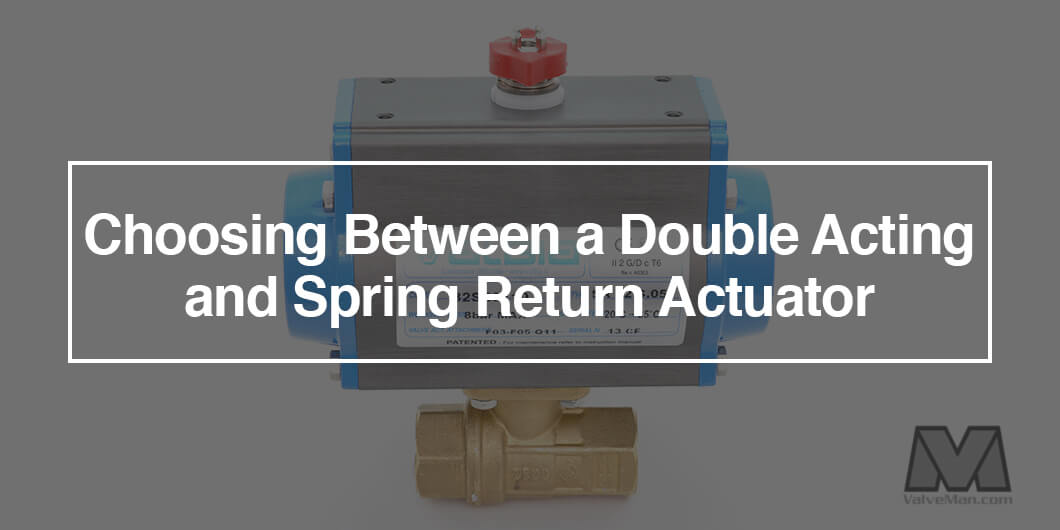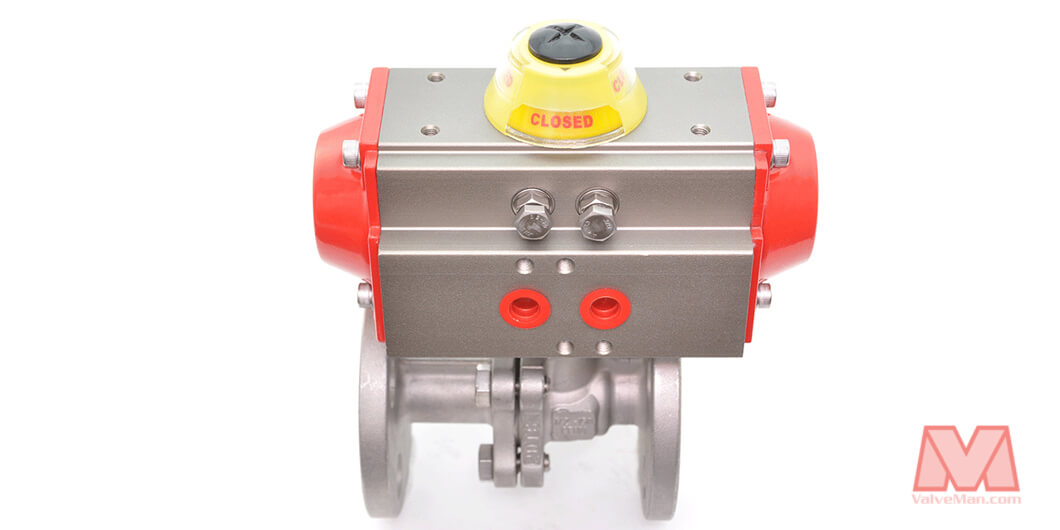Choosing Between a Double Acting and Spring Return Actuator
Posted by Russ Bailey on Sep 20th 2016

Most types of valves will require one of two types of actuators to use: the spring return (also known as the single acting) actuator and the double acting actuator. While there are a variety of other types and categories of actuators, these two are the most important and are frequently the go-to choice for use in facilitating the operation of a great variety of machines and industrial mechanisms. But how do you know which one is right for you?
Knowing the Difference Between Spring Return and Double Acting Actuators
The defining characteristic between these two style actuators can be found in their names; a spring (single) actuator supplies power for one direction of its working range while the double actuator supplies power for both working directions. This is because the spring actuator utilizes spring force to move the valve position to either open or close. In contrast, the double acting actuator utilizes a piston element to operate that valve and thus will require pressurization on both of its sides.
Picking the Right Actuator for the Right Application
- When going for torque or thrust strength While some sources believe that both types of actuators have equal strength capabilities when it comes to thrust and torque, we do recommend taking a hard look at your needs before making a hasty decision. The spring actuator's design makes it ideal for situations where the torque load is experienced on only one side, at the activation stroke. In contrast, the double acting actuator works great in situations where there are high torque loads in both its working directions and when there is a high thrust strength, such as in many oil and natural gas applications.
- When needing safety assurances: When it comes to safety system applications where immediacy in shutdowns and fail safes are of utmost concern, then it is always best to for the simplest option. Here, this means go for the spring return actuator due to its design simplicity and reliability.
- When the valve needs to fail in last position. There are a variety of applications where it is necessary to have a valve to fall in last position when it loses its signal or supply. The double acting actuation works best in these types of applications as it'll use pressurization on both of its size to keep the valve held safe and secured in last position.

Final Take-Aways
In the end, the most important thing to take away is that neither the single return actuator nor the double acting actuator is a one-stop solution for all applications. Each of these actuators have a unique design that makes it ideal for some, but not all uses. But no matter which one you choose, these actuators are generally considered easy to install and most are built for a long and reliable service. For more information about selecting the right actuator for your specific needs, contact one of our help service personnel today.
And if you enjoyed this article, found in helpful and informative, then you might also enjoy similar recent blog posts on our website like:

